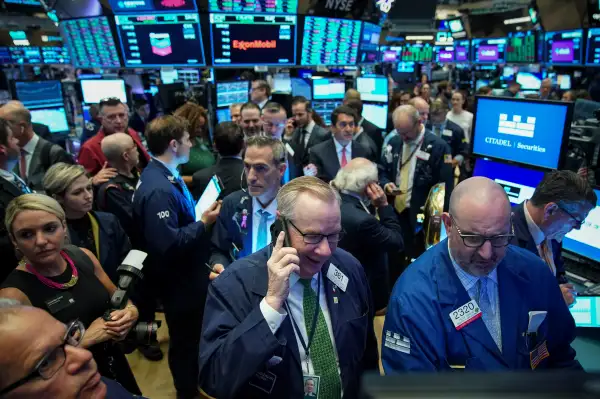The S&P 500 Just Hit 3,000 for the First Time. Here's What It Means for You
Money is not a client of any investment adviser featured on this page. The information provided on this page is for educational purposes only and is not intended as investment advice. Money does not offer advisory services.

The Standard & Poor's 500 shot past the 3,000 mark for the first time on Wednesday. Time to break out the champagne?
Unless it's for the U.S. Women's National Soccer Team that led a ticker-tape parade past Wall Street this morning, the answer is probably, "no."
Investing can be confusing -- full of numbers and abstractions. So when the market passes a big fat milestone like 3,000, it gets a lot people talking. But the S&P 500's achievement is almost certainly meaningless as far as your wallet is concerned, and it could even be a sign of trouble ahead.
Here's what it means for you:
The Background:
The Standard & Poor's 500 is an index of the 500 largest U.S. stocks by market value, with a history dating back to the to the mid-1920s. While the index is broader than its older, more famous cousin the Dow, which includes 30 "industrial" stocks, it doesn't represent the whole U.S. stock market, which also includes several thousand more "midcap" and "small cap" stocks.
The S&P 500 crossed the 2,000 level for the first time in August 2014, about five years ago. (After hitting 3,000 Wednesday morning, the S&P 500 fell back slightly and closed a 2,993. The new milestone won't be considered official until the S&P 500 closes above 3,000.) Meanwhile it took the index 16 years to climb from 1,000 to 2,000. That may make the latest feat sound impressive, but remember this: The stocks in the S&P 500 had to roughly double in value to take the index from 1,000 to 2,000, but only rise in value by 50% to get from 2,000 to 3,000. (Starting to see why pros consider milestones meaningless?)
In fact, the S&P 500 is having a very good year this year -- it's up about 18%. But its five-year average annual return -- covering roughly the entire time it took the benchmark to climb from 2,000 to 3,000 -- is 10.7%. That's roughly in line with long-term historical averages.
The Outlook:
While the stock market reaching a new high may fill you with optimism about your financial future, that's not necessarily the right reaction. If you've glanced at the headlines recently you've probably seen what most market watchers think is behind the rally: Hints from Fed Chairman Jerome Powell in testimony Wednesday that the central bank could move to cut interest rates soon. Stock market investors like low interest rates because they make it cheaper for U.S. companies to borrow, boosting business prospects.
But those investors are taking a very short term view: the reason Powell thinks a rate cut might be necessary in the first place is that the overall economy is weakening. "Uncertainties around trade tensions and concerns about the strength of the global economy continues to weigh on the U.S. economic outlook,” he told Congress.
Indeed, a number of closely watched economic indicators such as regional manufacturing indexes and the yield curve, which gives a read on investors' long-term inflation expectations, have suggested the U.S. economy could be facing a recession in coming months. Regardless of how traders reacted on Wednesday afternoon, that's not good news for the stock market.
What It Means for You:
The upshot is that, while a milestone like S&P 500 3,000 is fun to contemplate, it shouldn't affect your investing strategy. It hardly means the market is poised for S&P 500 4,000 anytime soon. It could even be a warning sign about an overheated economy.
What you should do is stick to a strategy of slowly and steadily accumulating stocks in a low-cost S&P 500 index fund, or, better yet, one that also includes all those thousands of other small-cap and mid-cap companies as well as international ones. Schwab Total Stock Market Index (SWTSX) and Vanguard Total International Stock Stock (VGTSX) are two of our favorite options.
Once you have a solid strategy in place, you should be able to just tune out the market's day-to-day moves. Your aim should not be to jump in when Wall Street is making headlines, but trust in the market's ability to generate steady returns over time.
